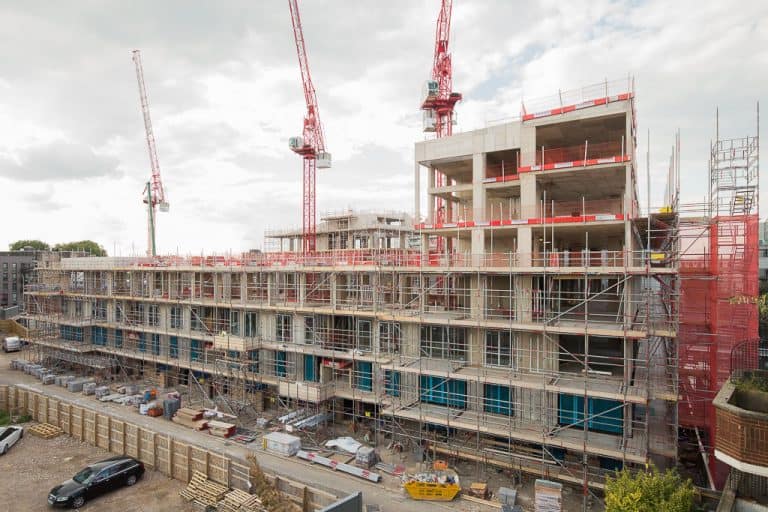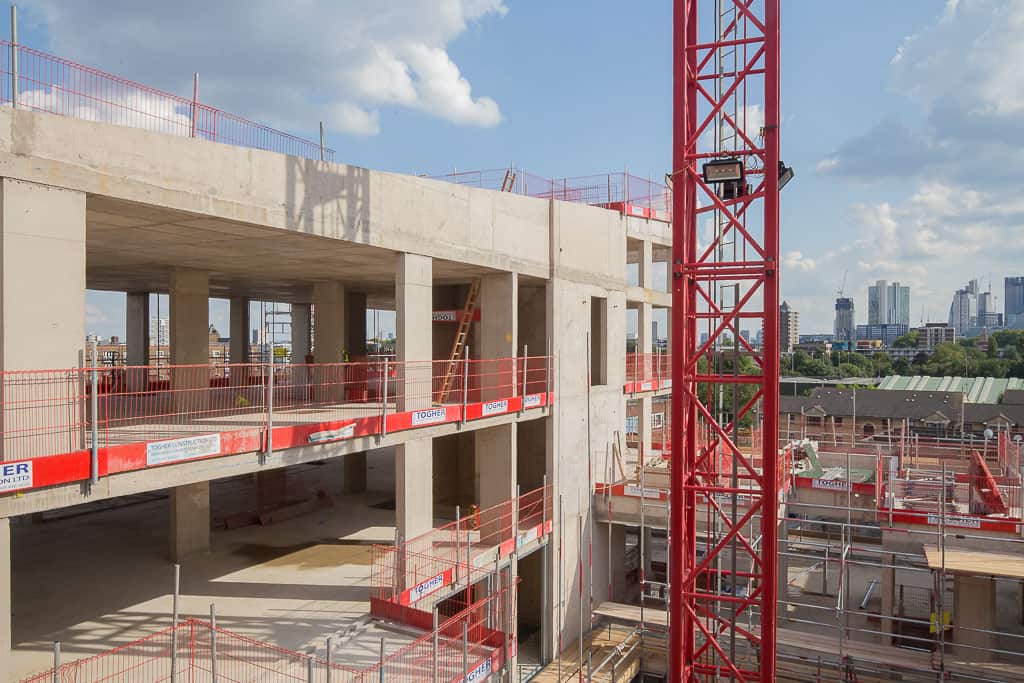
One of my recent projects was to go around photographing construction sites for a client in varying stages of completion. This is how I went about doing it. First I liaised with the client on exactly what they were looking for. What type of construction photography did they want and for what purpose? It sounds obvious but it’s best to ask. Were they looking for architecture photography of work in progress or just finished construction company projects?
Planning for Architecture photography for a construction company
Next came the planning part of the project. In most building and architecture photography jobs some type of prior planning is required. Where were the sites? How could I get from one site to another? Also how long would each site take to shoot? These were all factors I had to take into account for both the pricing and photographing of the construction sites. Next, I did an actual recce of the sites where possible. I made an effort to meet the foreman of each site. Failing that I found whoever could fit me out with protective gear and show me around. Gone are the days when photographers can just roam around in jeans and trainers.
I always keep in mind that I’m on their turf and work around their schedule. Everyone, hopefully, should be on the same team. Those working on-site do want you to take quality images for their company. It helps to build a good relationship with the foreman on each site. I explain how I plan to take the architecture photography for their construction company. I explain what I want to do and when. It also pays to understand what stage they are at and what might be happening in the near future. This way it is possible to work with them to best fulfill the brief.
What kit is required for photographing construction sites?
After having recce’d several of the sites I planned on what kit I would need. It came down to my Canon 6D camera, a 16-35F4L lens, and also a 24-105F4L lens if I needed it. For rock-steady images, I chose Manfrotto 190 tripod. This is surely the best most practical tripod on the market. It has the capacity to have its arm rotate 90º in a perpendicular way. This allows me to shoot things from different angles if I so desire. If you want to shoot directly up or down it makes that possible.


How weather can affect architecture photography.
Another important aspect of photographing construction sites is the weather and what direction the sunlight is coming from. If at all possible (& sometimes it is not) then shooting when the sun is out gives much better results. Living in London its often grey, overcast or raining and it can be 4 seasons in a day.
Advanced study of weather forecasts combined with a good relationship with the site manager will give you the best results. Of course, it helps to be able to stay at a site all day so the sun move around. In practical terms though, you need to work out in advance where the light is coming from when and then shoot accordingly. I have learned to make the most of those windows of opportunities when the sun is shining for the photography. When the weather is less agreeable it’s time to edit.. My clients have been very understanding of building and construction photography. Activity management is key. As long as I explain to them how I am going about their projects and I provide them with the quality images they are happy with how I work.
Shoot day
For most sites, I had recce’d then on arrival at the site on shoot day I have a plan. I know exactly what shots I am going to take and from where. Some will be from the ground up and others from the top down. Others will be from inside the site or parts of it. Depending on the brief it’s possible to have workmen in action and at other times a human free zone. This can highlight the technical or architectural design aspects of a building. Buildings don’t build themselves so it can be good to show the people on site doing their job. It can be operating a crane high in the sky or doing manual stuff on the ground.
Architecture Photography Tips
If a site has branding up then it’s a good idea to take some pictures where the branding is prominent. This allows the client to show it off either overtly or discreetly. On-site I did my best to look around and take as many shots from different angles. This gives the client options on what images to use. To make my job easier I use the spirit level in the settings. The 6D doesn’t have the forward-backward spirit level that the 5DMk3 and Mk4 & 5 have. If your camera doesn’t have this then a simple spirit level cube can be used. It is cheap and can be fixed on top of the camera in the flash bracket. It does just as good a job.
Most of the images taken I used the wide-angle 16-35F4L lens which has a 4 stop stabilizer built in and has been an outstanding lens for me.


Editing construction photography.
Architecture photography for a construction company is like lots of photography: how much you edit comes down to personal choice. Apart from the standard colour and tonal corrections then I usually check that all lens distortions are corrected though the 16-35F4L lens is so good at the edges that little extra editing is usually required.
All vertical and horizontal adjustments can be made in LightRoom and the only other editing depends on what images you choose and how clean or tidy you want the site to look.
On this site, I arrived the morning after a downpour and though the exterior had almost totally dried out there was surface water in this section below ground and getting rids of cables etc just makes the whole image look much neater and shows off the reinforced concrete much better. Yep, even concrete can benefit from a bit of editing.

